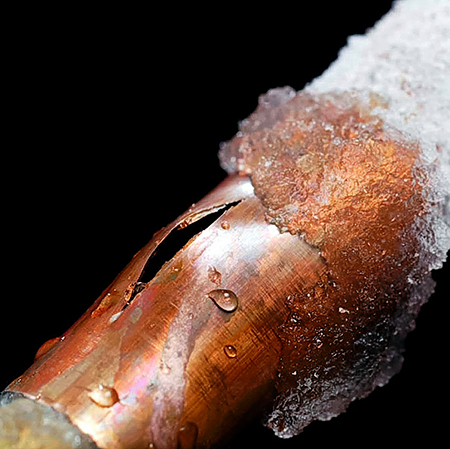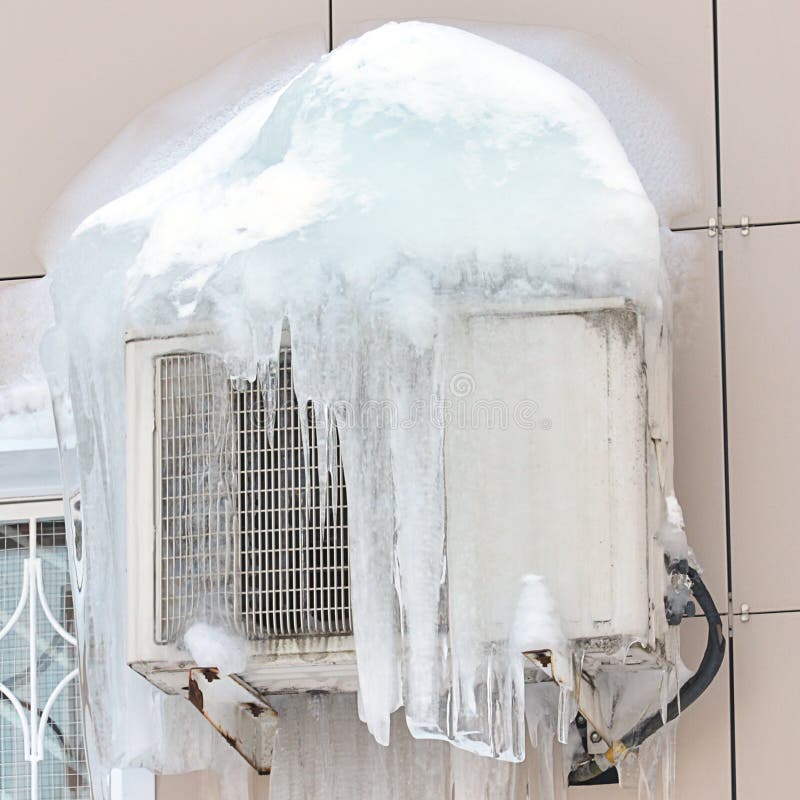What to Handle a Frozen AC Pipe - Essential Steps for Recovery
What to Handle a Frozen AC Pipe - Essential Steps for Recovery
Blog Article
Just about every person has got his or her own assumption when it comes to Have a Frozen AC Line? Here’s How to Fix It.

Introduction
Finding that your air conditioning pipeline is frozen can be worrying, specifically throughout hot summer season when you rely on your air conditioning unit the most. Understanding what to do in such a circumstance is essential to prevent further damages to your air conditioning system and guarantee your convenience inside.
Recognizing the Causes
Several variables can add to the cold of an air conditioner pipeline. Understanding these causes can help you address the concern effectively.
Lack of Airflow
One usual reason for an icy air conditioner pipeline is inadequate air movement. When the air movement over the evaporator coil is limited, it can create the coil to go down below freezing temperature level, leading to ice development on the pipe.
Reduced Refrigerant Levels
Not enough cooling agent levels in your air conditioning system can likewise result in a frozen pipeline. Reduced cooling agent levels can trigger the pressure in the system to go down, causing the cold of wetness on the evaporator coil.
Winter Conditions
In colder climates, freezing temperature levels outside can contribute to the cold of a/c pipelines. If your air conditioner system is not effectively shielded or if there are leaks in the ductwork, cool air can penetrate the system, causing the pipe to ice up.
Dirty Air Filters
Dirty or stopped up air filters can restrict airflow in your air conditioning system, leading to numerous issues, including an icy pipeline. It's necessary to change or cleanse your air filterings system regularly to make sure correct air flow and stop ice accumulation.
Indications of a Frozen AC Pipe
Identifying the indicators of a frozen a/c pipe is critical for punctual activity.
Lowered Airflow
If you notice a significant decline in air movement from your vents, it could show an icy pipe.
Ice Buildup on the Pipe
Visible ice buildup on the cooling agent line or the evaporator coil is a clear indication of a frozen air conditioner pipeline.
Unusual Sounds from the Unit
Uncommon audios, such as hissing or gurgling, coming from your air conditioning system can signal that there's ice existing on the pipe.
Immediate Actions to Take
When confronted with a frozen air conditioning pipeline, it's vital to act promptly to stop additional damage to your cooling system.
Switching off the air conditioning
The primary step is to turn off your air conditioning unit to avoid the system from running and worsening the problem.
Looking for Blockages
Inspect the location around the indoor unit for any blockages that may be blocking air movement, such as furnishings or drapes.
Thawing the Pipe
You can make use of mild techniques like placing towels taken in cozy water around the frozen pipeline to aid thaw it slowly.
Safety nets
Taking safety nets can aid stay clear of future occurrences of an icy air conditioning pipeline.
Routine Maintenance Checks
Schedule normal maintenance talk to a professional HVAC professional to make sure that your air conditioning system is running effectively.
Altering Air Filters
Consistently change or clean your air filters to prevent air flow restrictions and preserve optimum performance.
Protecting Exposed Pipes
If your air conditioner pipelines are exposed to cold temperatures, consider shielding them to stop cold throughout winter months.
Seeking Professional Help
If DIY approaches fall short to resolve the concern or if you're not sure about just how to continue, it's best to look for aid from a qualified HVAC professional.
When DIY Methods Fail
If your attempts to thaw the pipeline or address various other issues are unsuccessful, it's time to call in a specialist.
Significance of Hiring a Professional HVAC Technician
A qualified HVAC technician has the proficiency and devices essential to identify and fix problems with your air conditioning system securely and efficiently.
Verdict
Dealing with an icy air conditioning pipeline can be an aggravating experience, however understanding exactly how to respond can assist decrease damages and restore comfort to your home. By comprehending the causes, recognizing the indicators, and taking timely activity, you can successfully address the concern and protect against future occurrences.
Frozen AC Line: Why It Happens & What To Do About It
A frozen AC line can be a rather peculiar sight in a place like Phoenix, Arizona where nothing ever freezes. In this post, we’ll discuss what makes an air conditioner line frozen – and what you can do about it.
Dirty Air Filters
Did you know that you should be cleaning or replacing your air filters on a monthly basis? Failing to do this can result in airflow issues that, in turn, cause your evaporator coils and lines to freeze over. You’ll notice a buildup of ice on both components, although the buildup on your pipes will, of course, be more evident unless you open your air condition up to reveal the coils.
What To Do About It
Give your air filter a good cleaning if it’s reusable. If not, replace the filter outright. Next, switch your air conditioner’s fan setting on and leave it there for 2-3 hours. This will draw warm air in, helping to thaw your evaporator coil. You can also check out this article for some tips on cleaning the coils themselves if you’d like to speed the process up. Before you switch the unit back to its normal state, make sure the supply vents are completely unobstructed and free of dust or other debris.
If you keep having this issue even after replacing your filters regularly, contact a local HVAC repair company and have them inspect your evaporator coil, ductwork, and any other components that may be at fault. If you live in the Phoenix, Arizona area, give American Home Water and Air a call.
Low Refrigerant Levels/Leakage
What To Do About It
Contrary to what air conditioner “recharge” companies often tell their clients about refrigerant, it should never need to be simply refilled. You see, refrigerant runs in what experts refer to as a “closed loop.” Refrigerant really shouldn’t be leaving that loop. If it is, you’ve got a leak.
Paying someone to come and pump more refrigerant into your system (aka “recharge” it) isn’t the solution. Doing that will simply kick the can down the road. Besides, refrigerant leaks can be harmful to the environment and people in your home.
Rather, you need to take care of the leak with the help of a technician. Check out this article for some more information about dealing with air conditioners that are leaking refrigerant. Before you contact a technician, switch your thermostat to the off position. Then, switch the fan setting on and let it run for 2-3 hours so the unit can thaw.
Improper Temperature Setting
Improper temperature settings can also cause a drop in your air conditioner’s pressure. What many people don’t realize is that air conditioners are actually designed to run when temperatures have fallen above roughly 60 degrees Fahrenheit. If you run the unit when it’s cold outside, you’ll run into many issues, including frozen components.

Do you appreciate more info about What Do I Do If My AC Pipe Is Frozen? Leave a comment down the page. We'd be interested to see your feelings about this write up. We hope that you visit us again in the near future. Don't hesitate to take a moment to promote this post if you enjoyed reading it. Thanks for your time. Please stop by our website back soon.
Visit Website Report this page